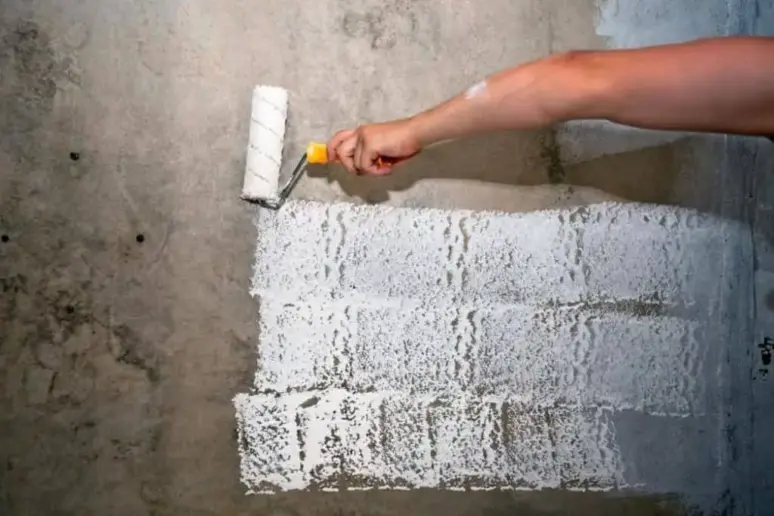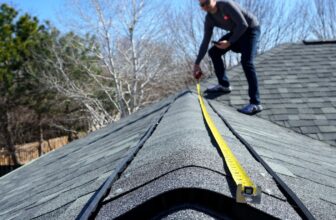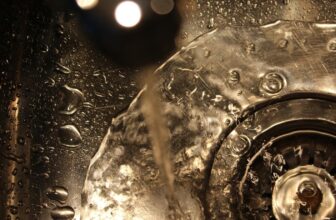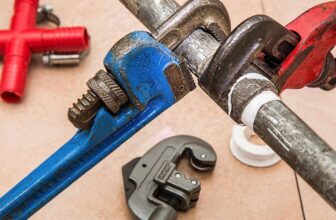How Long Can You Leave Primer Unpainted? (Answered!)
Primer is an essential element in the process of painting.
It helps create a surface that is easier to paint and also ensures better adhesion of the paint.
While it’s common knowledge that you should apply paint as soon as possible after priming, life can get in the way and sometimes you may not be able to get around to painting over the primer right away.
This can lead to the question of how long you can leave primer unpainted before it starts to degrade or become ineffective.
The answer may depend on the type of primer you are using and the conditions it is exposed to.
The surface being primed also plays a role.
In this article, I’ll take a closer look at the shelf life of different types of primer and explore the factors that can affect their longevity.
So, let’s dive in!
How Long Can You Leave Primer Unpainted?

So, how long can you leave primer unpainted for exactly? The answer to this question will depend on a few different factors.
This includes where you are planning on painting, the type of primer you have, how long your particular primer dries, and other factors.
But, on average, you should only leave most primer unpainted for twenty-four hours.
Some primers can be painted on sooner around three to four hours after drying, though.
Latex primer is different, this can stay unpainted for up to thirty days. And oil-based primers can last for up to fourteen days without being painted.
Overall, though, it’s best to paint your primer sooner rather than later. The longer you leave your primer unpainted, the more dust and dirt it will collect.
This means you’ll have to spend more time cleaning your wall before you paint over it. And, if you are priming in hot weather, the time you can leave primers unpainted will go down.
So, keep all of this in mind as you choose what you want to do once you use a primer.
How Long Exactly Does It Take For Primer To Dry?
Before you paint over your primer though, make sure it is completely dry.
Wet primer mixed with paint can dilute the paint color and make it harder to paint your walls.
Again, each primer product will have a different dry time.
Consider the weather and other conditions too. But, usually, the average primer will be able to dry within thirty minutes to an hour.
Some products do take a little bit longer and might need a full 24 hours to dry. Oil primer is one primer type that requires twenty-four hours to dry.
I recommend reading the label on your primer for the best results, though. Still, it doesn’t hurt to let your primer dry for a full day.
Can You Make Your Primer Dry Faster?
Certain primers just take longer to dry. Acrylic and oil-based take 24 hours, and other primers like latex can take anywhere from three to four hours.
So, can you make your primer dry faster so you can put on pain or another layer of primer?
To answer this question, yes, you can absolutely make your primer dry faster.
First off, try putting down primer when the weather is ideal. Primer will dry a lot faster in a cooler environment.
If you happen to be indoors, try turning up your AC to lower the humidity and heat. You can also use a dehumidifier as well to bring down the humidity level.
Another thing you might want to try out is spreading thinner layers of primer. You don’t want to put down a ton of thin layers.
But just thinning out the thickness a little will greatly reduce the dry time.
Finally, consider getting a fan or opening some windows. The better the air circulation is in the area you are priming, the better the dry time will end up being.
How Long Should You Wait Between Primer Coats?

Most people end up placing a few coats of primer down before they start painting. How many coats you will need does depend on how much paint you want to put down.
The type of primer you have will decide this too. But, how long should you wait before you put your next coat of primer on?
First, consider how much primer you are putting on. If you are using light paint or paint that is white you won’t need a lot of primer coats to put on.
Also, a thinner coat of primer can be used so that you can reduce the wait time. Still, how long you wait will depend on the type of primer you have.
For oil-based, water-based, and acrylic primer, you might have to wait a full 24 hours to put on your next coat.
With some epoxy primers and other similar products, you could put on your next coat in thirty minutes to an hour. It really depends on the primer you have.
Bottom line, just wait for the primer you put down to dry fully before putting on the next coat.
Do I Need Two Coats Of Paint If I Use Primer?
You might be wondering if you need two coats of paint when you use a primer. In most cases, you will still need two coats of paint even when you use a primer.
This is because the pigment of a single coat of paint usually isn’t enough to cover your wall.
If you are trying to paint your wall a deeper or darker color especially, two coats of paint or even more might be necessary.
Two coats of paint will also provide more protection and better results in most cases.
However, if you are painting your wall light or are painting it a similar color it is possible to use only one coat.
You want to make sure that you are using a high-quality primer if you use a single coat of paint.
Usually, one paint coat works best with white paint as you will get the best paint coverage this way.
How Should I Prepare My Wall For Primer?
Before you put primer on your wall, is there anything you need to do?
Again, think about the temperature of the area you are trying to prime. Paint primers don’t do well in hot or humid conditions.
Hotter weather can also break down the primer. So, keep it around 74 degrees Fahrenheit or a little below with a fan or AC.
Don’t make the room too cold though as this can make the primer dry tacky and harder to paint over.
Experts recommend not going below 64 degrees Fahrenheit.
Next, clean the area you are going to prime. You don’t want your primer to dry with dust, debris, and other remnants in it.
Really it’s best to vacuum and sweep ahead of time.
This way nothing gets on your primer. In addition, make sure to wipe your primer down with a wet cloth after it is fully done drying up.
Finally, decide how you want to apply your primer. You can spray it on or apply it by hand with a brush.
Do You Need To Use Primer Before Putting On Paint?
Some people might be wondering whether they actually need to put a primer on before they paint.
While primer might not seem important at first glance, it is something you need. It is entirely possible to paint over a wall without primer.
But I don’t really recommend this as your wall won’t look that good. Especially if you don’t want your walls peeling or losing color, it’s better to just use a primer.
The primer will coat your wall and fill in any gaps and uneven surfaces for you. This is before the paint goes on. Primer also makes the color on your wall just look better.
If you are simply touching up your wall you won’t need a primer. But if you are changing the color of your wall or completely repainting it then use a primer.
Going from darker to lighter colors really requires a primer to make your wall look good. And, certain surfaces absolutely need a primer too.
Wood is one example it is really porous and needs a primer to actually hold paint.
Still, some paints are self-priming these days. So, these products can be a convenient alternative to priming a wall before painting.
Just make sure you are buying quality self-priming paint.
Ultimately the choice is up to you how much primer you use and whether you use it at all. Usually, though, it’s best to just put on primer.
Conclusion
I talked about how long can you leave primer unpainted in detail. There is a lot to know about this topic, but I went over everything you needed to know here.
Many popular primers will dry within hours if not sooner and should be painted on sooner rather than later.
But be aware that some primers take longer to dry. So, you have to wait to paint them.
In addition, some primers can be painted on up to thirty days later while others need to be painted over as soon as they dry.
Regardless, don’t leave your primer unpainted too long. As this will allow your primer to get dirty and contaminated.




